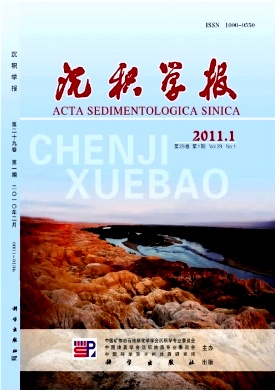Magnetic Susceptibility and Its Environmental Significance of Lake Sediments in Tibet Plateau
- Received Date: 1900-01-01
- Rev Recd Date: 1900-01-01
- Publish Date: 2011-02-10
-
Key words:
- magnetic susceptibility /
- lake deposit /
- Hohxil area
Abstract: A 106 m long sediment core named BDQ0608 was drilled from the Hohxil area in hinterland of the Tibet Plateau, and the lithology is mostly reseda lake sediments with part of a thin oxide color layer. The thermal demagnetization indicates that magnetic mineral in BDQ0608 core mainly includes magnetite, maghemite, goethite, melnikovite, and trace hematite. Magnetic susceptibility was directly related to the composition of magnetic mineral. Magnetite, which abounds in sandy and argillaceous samples, was considered to derive from the detrital minerals in the basin and be a major contributor to magnetic susceptibility of the whole core. The hematite and goethite generated under postoxidation and oxidationreduction conditions are both lowmagnetic minerals, so they have relatively little contributions to the magnetic susceptibility. Furthermore, it should be specially pointed out that ferromagnetic iron sulfide which dominates magnetism of sediments in the argillaceous sediments would induce much higher magnetic susceptibility than the others. In addition, magnetic susceptibility, grain size, TOC and color reflectance were analyzed at 10 cm intervals. The positive correlation between magnetic susceptibility and clay content is attributed to the destruction of the mucus pyrite formed late and magnetic minerals from sand sediments. Meanwhile, comparing magnetic susceptibility with TOC and color reflectance a* separately, the results indicated that there are both positive correlation between them, which may be mainly affected by temperature and humidity. On the one hand, high TOC content implied that the climate during this period was warm and humid corresponding to high lake water level, which could avoid destroying magnetic minerals in the sediments. On the other hand, it was beneficial to the generation of ferromagnetic sulfide in the lakes with high TOC content. The amount of hematite could have a certain contribution to the change of magnetic susceptibility, but it mainly dominated red degrees value(color reflectance a* values) of sediments. So, low color reflectance values of the sediments show less hematite content, but it may also be the reason for the poor performance of the thermal demagnetization process of hematite. The good positive correlation between color reflectance a* values and the changes in magnetic susceptibility curve showed that the varieties of them were subjected to the same environmental factors. Nevertheless, the fluctuation of magnetic susceptibility is not in line with other proxies, and influenced by ambient environment condition during the period of sediment formation. Although as an environmental proxy magnetic susceptibility can reflect environmental changes well, we must combine with other high accurate environmental proxies to improve the accuracy of paleoenvironmental reconstruction.
| Citation: | TIAN Qingchun. Magnetic Susceptibility and Its Environmental Significance of Lake Sediments in Tibet Plateau[J]. Acta Sedimentologica Sinica, 2011, 29(1): 143-150. |






 DownLoad:
DownLoad: